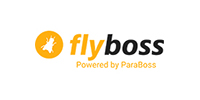Fast-tracking genetic gain for Australian woolgrowers
Selecting the right rams for your business is big business. So, what tools are available to help you with selection, and how can you use them to your advantage?
Author: Georgia Pugh, AWI Extension WA Project Manager
For Australian woolgrowers, ram selection is one of the most powerful profit drivers on the farm. Each ram selection decision influences flock performance for around 16 years in a self-replacing system. While genetic progress typically advances at around 1–2% per year, today’s tools – sheep classing, Australian Sheep Breeding Values (ASBVs), indexes and genomics – allow woolgrowers to fast-track gain, build resilience, and future-proof their operations.
Revealing true genetic merit
How an animal looks and performs is due to both genetic and environmental influences, but only genetic merit is passed to their progeny. Environmental influences on how an animal looks are not passed on to progeny.
Even when all the known environmental influences are accounted for (birth date, birth type, rear type, dam type, paddocking, etc.) there are still considerable unknown environmental influences (one off diseases, how well they were mothered, etc.) that have a large impact on how the animal looks and performs.
Visual and raw data assessments reflect an animal’s phenotype (performance). Breeding Values account for the known environmental influences and reflect how that animal’s progeny will perform. However, there are important traits that don’t have Breeding Values, and not all traits can be visually assessed well.
Thus, assessing the breeding potential of an animal requires both visual and objective assessments. It is important to note that tight management protocols are needed to obtain both good visual and objective assessments.
ASBVs predict an animal’s genetic merit for traits such as growth, clean fleece weight or fibre diameter, allowing rams from different flocks and environments to be compared fairly. They are calculated using performance, pedigree and genomic data, accounting for known environmental effects and heritability.
ASBVs can be positive or negative, depending on the trait. For example, a low or negative Worm Egg Count (WEC) ASBV indicates greater resistance to worms, while higher weight ASBVs indicate faster growth. Each ASBV has an accuracy score, reflecting the amount of data available. Highly heritable traits respond faster to selection, while more lowly heritable traits, like fertility, are more influenced by nutrition and management but still have variability that can be utilised.
A ram contributes half the genetics of its lambs, so you need to halve ASBVs when comparing expected progeny performance.
Check out the Sheep Genetics Understanding MERINOSELECT ASBVs fact sheet for more information, including an example of how ASBVs are displayed and what each component means.
Accelerating accuracy with genomics
By analysing an animal’s DNA, genomics identifies genetic relationships more precisely and boosts the accuracy of ASBVs, particularly for young animals prior to a direct measure being taken and for traits that are more difficult or costly to measure, such as carcase or reproduction traits.
In practical terms, genomics helps ram buyers make more confident selection decisions at young ages. The industry poll/horn tests are also completed using genomics, which is useful if this is important to your breeding objective.
Simplifying decisions with indexes
While ASBVs show how an animal performs for individual traits, indexes combine a selection of ASBVs into them into a single value aligned with specific breeding goals. This makes it easier to rank rams on overall profitability and genetic merit for your system. Indexes also account for genetic correlations, balancing trade-offs such as fleece weight and fibre diameter.
The four MERINOSELECT indexes are:
- Fine Wool (FW): breeding for finer wool
- Wool Production (WP): increased wool yield
- Sustainable Merino (SM): balanced traits for wool, growth, fertility and carcase
- Merino Lamb (ML): wool, meat and prime lamb focus
You can find more information in this Sheep Genetics MERINOSELECT indexes – a ram buyer’s guide fact sheet.
There are often traits that may be important to your breeding objectives that are not included in the index that best suits your production system, so you may superimpose minimum acceptable production performance for key traits. Visual assessments should always be combined with objective assessments.
Benchmarking your ram team before joining
Tracking your flock’s genetic progress helps guide future ram selection. Keep records of rams used each year and calculate your ram team ASBV average. There’s a handy tool on the Making More From Sheep website, Tool 9.3 How to calculate your current ASBV position, that can help you with a template to do this.
You can also use a Flock Profile, which genotypes a sample of 20 randomly selected lambs, to provide you with flock average breeding values to compare where your flock sits compared to flocks in the MERINOSELECT database.
Both approaches help monitor progress and inform joining decisions.
Putting it all together
To fast-track genetic gain:
- Define your breeding objective – identify the traits of economic importance in your system.
- Use the right index – select the index that best fits your production goals.
- Check key ASBVs – focus on traits critical to your enterprise.
- Inspect rams visually – confirm structure, type and wool quality.
By combining visual assessments, ASBVs, indexes and genomics, woolgrowers can make faster, more confident selection decisions, turning every ram selection decision for joining into measurable progress toward productivity, profitability, and long-term flock improvement.
More information
- Making More From Sheep Module 9 Boost business with breeding
- Making More From Sheep Tool 9.3 How to calculate your current ASBV position
- Making More From Sheep Chapter 9.4 Business decisions are driven by objectives
- AWI Sheep selection tools
- Sheep Genetics Understanding MERINOSELECT ASBVs
- Sheep Genetics MERINOSELECT indexes – a ram buyer’s guide
- Sheep Genetics ASBV and indexes explained
- MLA Genetics Hub
- AWI Extension WA webinar Making sense of ASBVs & selection indexes















